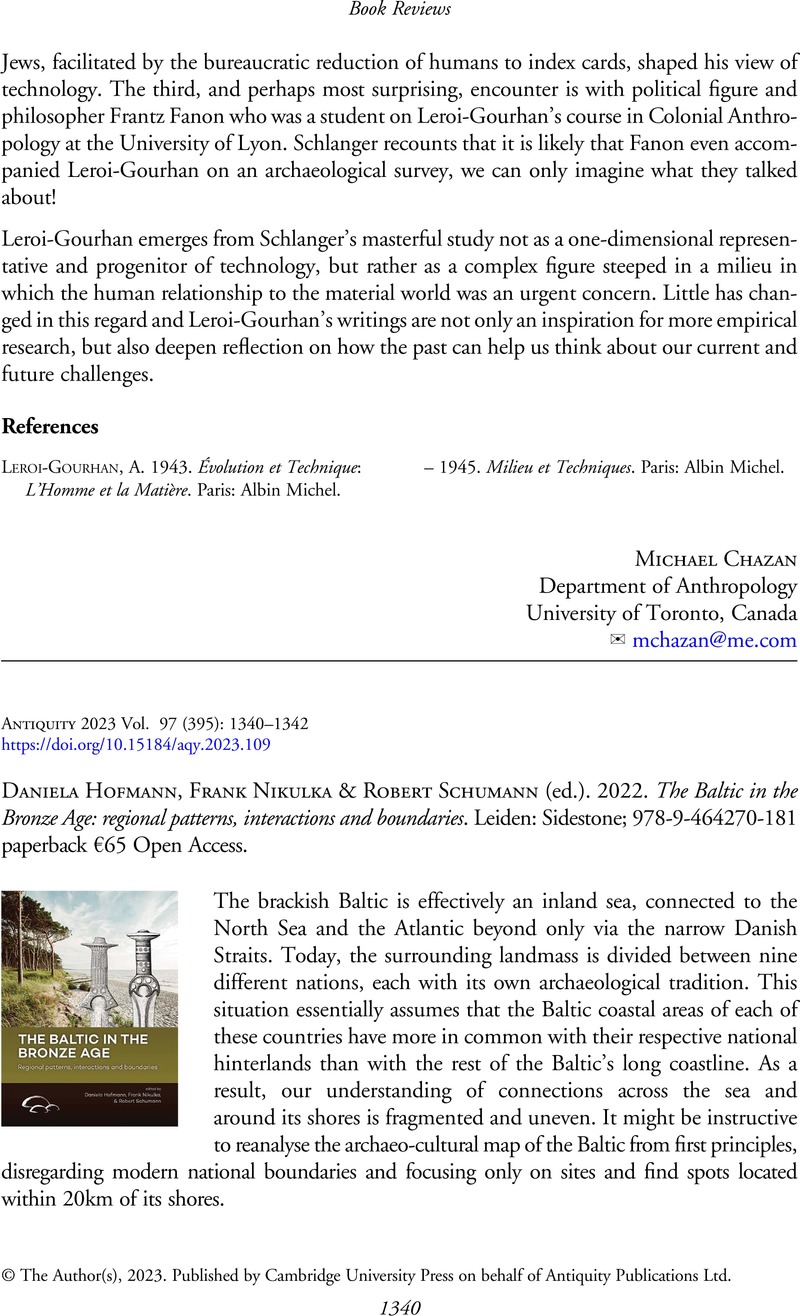No CrossRef data available.
Daniela Hofmann, Frank Nikulka & Robert Schumann (ed.). 2022. The Baltic in the Bronze Age: regional patterns, interactions and boundaries. Leiden: Sidestone; 978-9-464270-181 paperback €65 Open Access.
Review products
Daniela Hofmann, Frank Nikulka & Robert Schumann (ed.). 2022. The Baltic in the Bronze Age: regional patterns, interactions and boundaries. Leiden: Sidestone; 978-9-464270-181 paperback €65 Open Access.
Published online by Cambridge University Press: 03 August 2023
Abstract
An abstract is not available for this content so a preview has been provided. Please use the Get access link above for information on how to access this content.

Information
- Type
- Book Reviews
- Information
- Copyright
- Copyright © The Author(s), 2023. Published by Cambridge University Press on behalf of Antiquity Publications Ltd.

